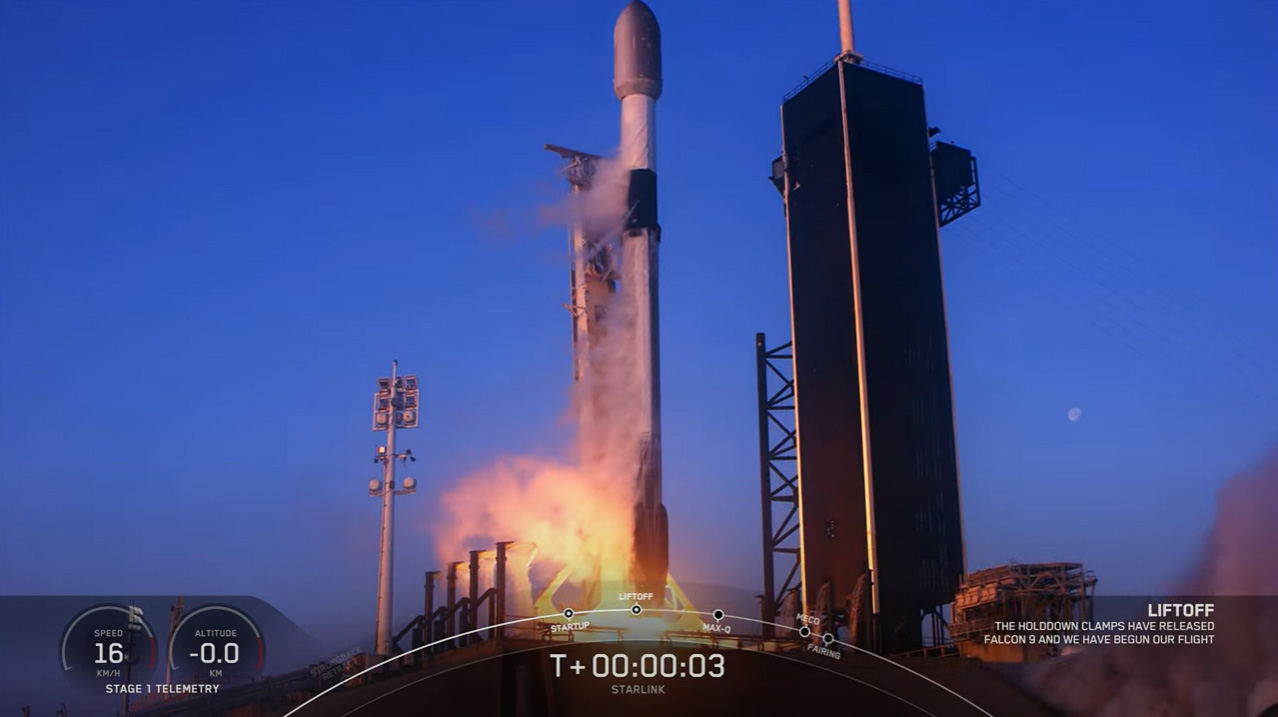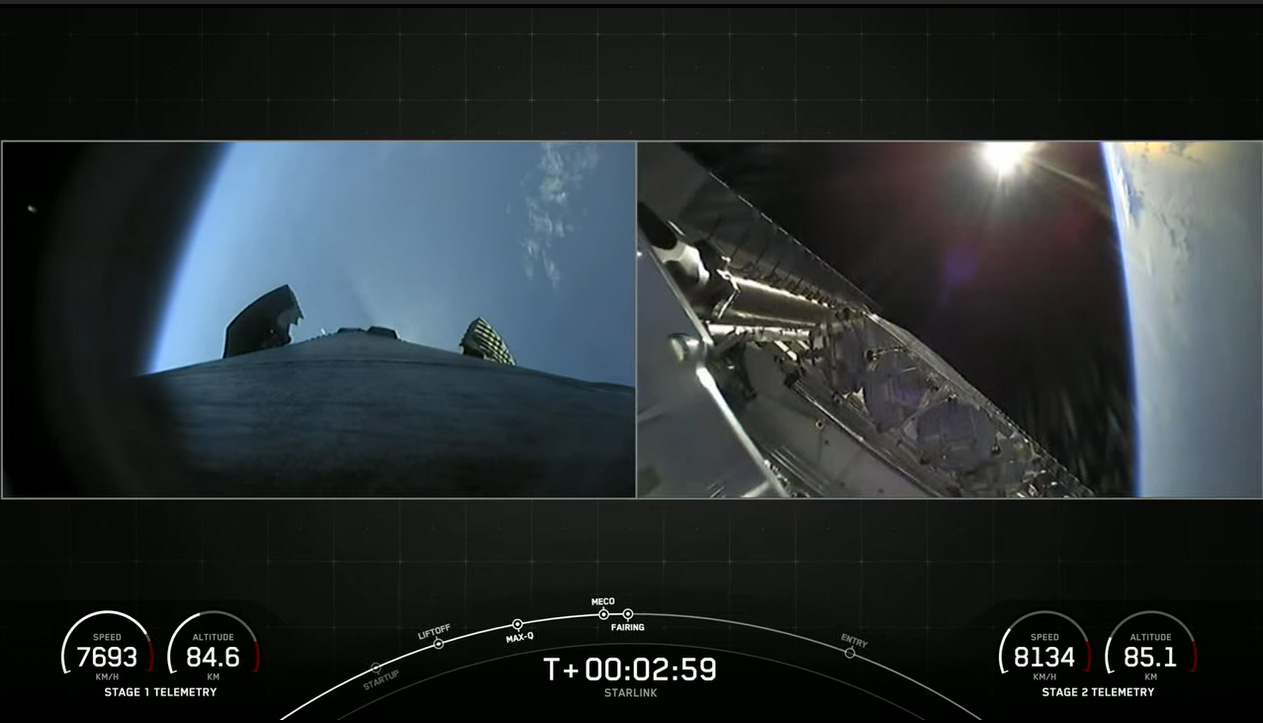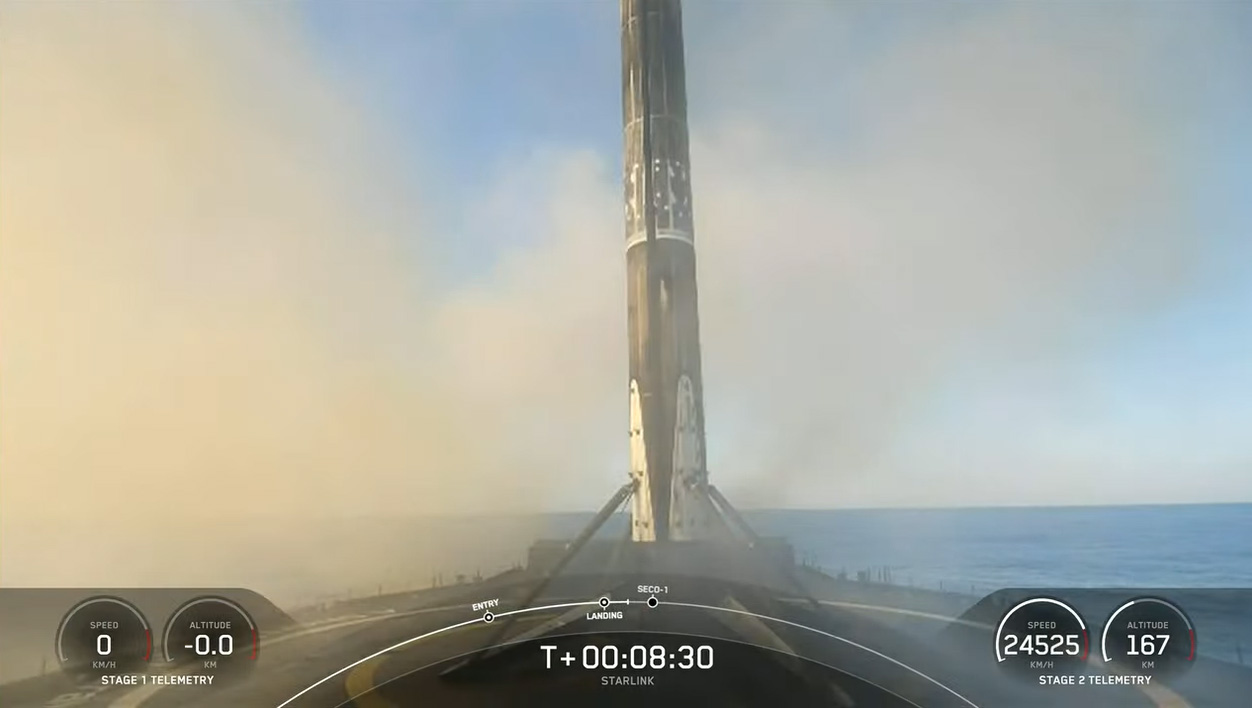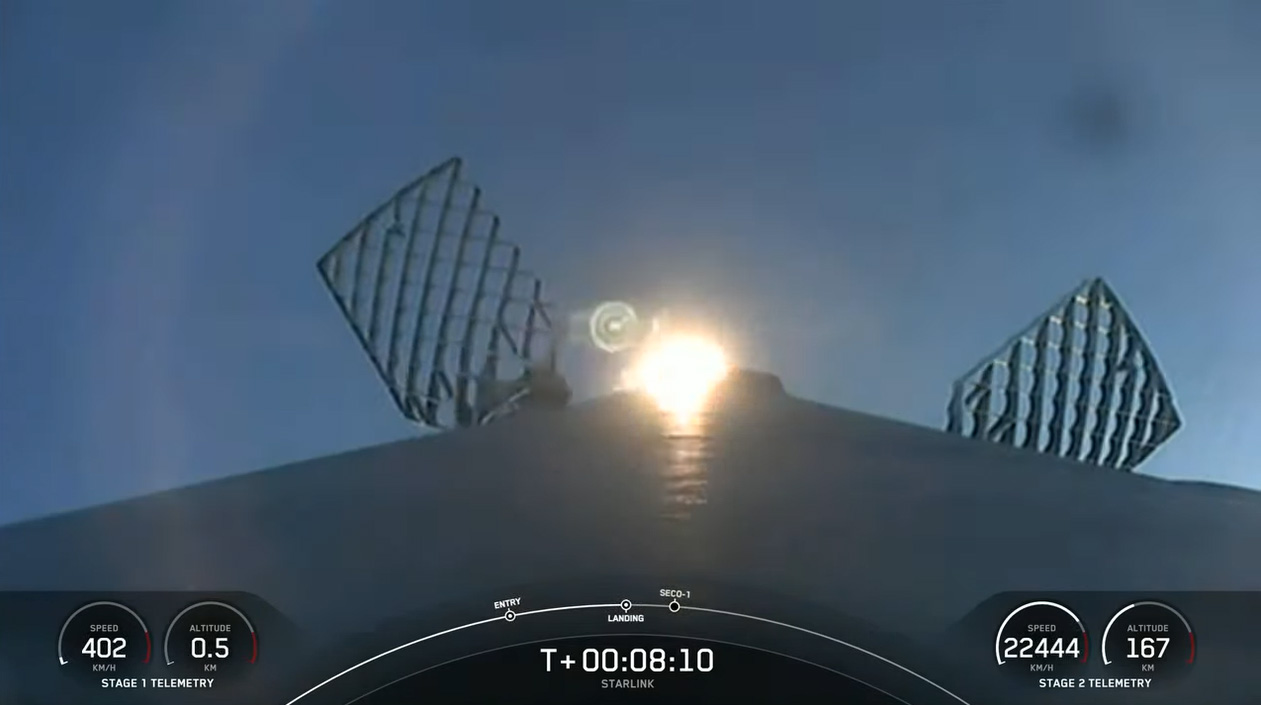A used SpaceX rocket launched a new fleet of Starlink internet satellites into orbit and returned to Earth for a stunning landing at sea early Wednesday (May 18).
The two-stage Falcon 9 rocket topped with 53 Starlink spacecraft soared into the Florida morning sky from NASA's Pad 39A at the Kennedy Space Center. Liftoff was at 6:59 a.m. EDT (1059 GMT), about 39 minutes later than SpaceX initially planned.
"Falcon 9 has successfully lifted off carrying our 53 Starlink satellites into space," SpaceX production manager Jessie Anderson said during a live webcast. The launch marked SpaceX's third Starlink mission in five days following missions on May 13 and May 14.
About nine minutes after liftoff, the Falcon 9 rocket returned to Earth with a smooth landing on SpaceX's droneship A Shortfall of Gravitas in the Atlantic Ocean, with onboard cameras capturing stunning video of the entire descent. It was landing number 121 for a SpaceX booster, Anderson said.
Related: SpaceX's Starlink megaconstellation launches in photos



Starlink is SpaceX's broadband constellation, which currently consists of more than 2,300 satellites, according to astrophysicist and satellite tracker Jonathan McDowell. That number has been growing rapidly lately; SpaceX has launched 21 missions already in 2022, and 14 of them have been dedicated Starlink flights as of Wednesday's launch.
But the Starlink population could get truly huge in the not-too-distant future; the next-generation version of the constellation may eventually consist of up to 30,000 satellites, according to a Reuters report.
Get the Space.com Newsletter
Breaking space news, the latest updates on rocket launches, skywatching events and more!


Wednesday's mission marked the fifth for this particular Falcon 9 first stage. SpaceX previously used the rocket booster to launch its Arabsat-6A mission and the Space Test Project-2 flight for the U.S. Space Force (both as one of two side boosters on a Falcon Heavy rocket); as well as the COSMO-SkyMed Second Generation FM2 satellite for Italy and an earlier Starlink flight.
Such reuse is a priority for SpaceX and its founder and CEO, Elon Musk, who views rapid and repeated reflight as the key breakthrough needed to make ambitious exploration feats such as Mars settlement economically feasible.
Mike Wall is the author of "Out There" (Grand Central Publishing, 2018; illustrated by Karl Tate), a book about the search for alien life. Follow him on Twitter @michaeldwall. Follow us on Twitter @Spacedotcom or on Facebook.
Join our Space Forums to keep talking space on the latest missions, night sky and more! And if you have a news tip, correction or comment, let us know at: community@space.com.

Michael Wall is a Senior Space Writer with Space.com and joined the team in 2010. He primarily covers exoplanets, spaceflight and military space, but has been known to dabble in the space art beat. His book about the search for alien life, "Out There," was published on Nov. 13, 2018. Before becoming a science writer, Michael worked as a herpetologist and wildlife biologist. He has a Ph.D. in evolutionary biology from the University of Sydney, Australia, a bachelor's degree from the University of Arizona, and a graduate certificate in science writing from the University of California, Santa Cruz. To find out what his latest project is, you can follow Michael on Twitter.









